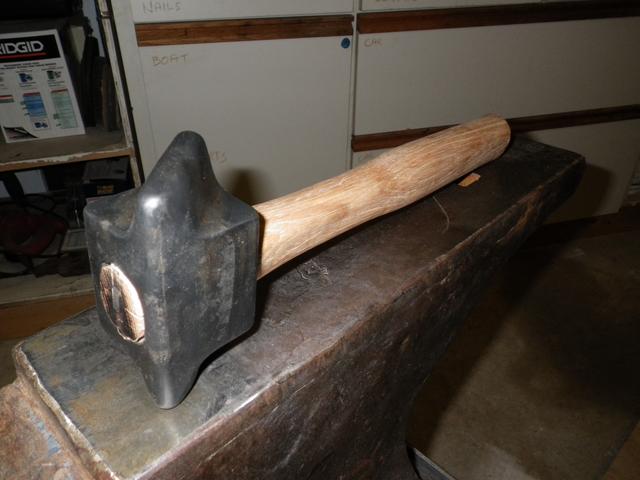My Smithy (Shop)
A blade smith's shop is called a smithy. it is here that he forges, forms and finishes his blades, heat treats them and fits them with the "furniture", that is the guard, grip and pommel. There are many different styles of knives, daggers and swords; from the traditional to the modern, to the abstract and artistic. There are those made for practical use, such as kitchen and hunting knives, and there are those which are meant only to be collected and displayed. The degree of finish and workmanship varies from the plain and practical to the extremely intricate and artful. A beautiful knife is one which is pleasing to the eye, executed with precision and care, balanced in proportion, and manages to combine different materials harmoniously in one. Making knives combines the art and skill of designing a tool which is both functional as well as artistically pleasing, the technical skill to execute the design, and the dexterity to fashion all the components from raw materials and assemble them with a precise fit. A well made knife shows that the maker has the skill to produce a sharp, sufficiently hard blade which will keep a good edge, a comfortable, well designed grip which is suitable to the use of the knife, and is finished appropriately to the task.
My smithy is my garage, as I live in the suburbs of Vancouver, British Columbia, Canada. It has evolved over the years, and continues to do so, as I add more tools and machinery to improve my work. I have a gas-fired forge which I built from a 10 inch cast iron pipe, insulated with 1 inch thick refractory wool and coated with fire-proof cement. It is fired from below by a 500,000 BTU Tiger Torch, hooked up to a 30lb propane tank. The forge is mounted on a steel table which is on wheels, so I can move it about my shop, if need be. A rack along the side of the table holds various hammers, pliers and tongs. A magnet mounted on a swivel serves as an indicator to when the steel is at its "critical" temperature for forging. A water tank underneath the forge serves to cool any piece of steel, or a tool which got too close to the forge opening. The forge has two ports opposite each other to allow a long piece of steel to be placed in the forge and the ends protruding. This is necessary for forging sword blades.
The forge My pride and joy - a 19th century
175 lbs Peter Wright anvil
I have a small bench-top metal lathe for turning pommel nuts and guards, and a small wood lathe for turning grips. They are invaluable tools for the blade smith who makes more traditional daggers and swords.
My 175 lbs anvil mounted on a steel stand filled with sand allows me to forge my blades from round rods or rectangular billets.
The belt grinder is perhaps the most important tool for the blade smith. It shapes, smoothes and polishes everything from blade to grip, and the various grit sizes, up to a polishing pad, all make the work easier and the results more consistent.
Belt grinder Heat Treating Chamber for large blades
A drill press, two electric buffers, and a series of electric hand tools (angle grinder, MIG welder, belt sander, rotary tool, power drill) are all useful at the right time. My work bench is clad with steel, as I do a lot of grinding and welding there.
My shop
Finally, an assortment of files in different sizes, shapes and profiles, lots of emery cloth, sand paper and hand polishing pads, plus the usual assortment of hand tools any shop should have, round out my knife making set-up.
Two Mountains Forge
Hand Forged Custom Knives, Swords and Daggers
My other anvil: 150 lbs, this is a "short horn", also over 100 years old. Made by Wilkinson and Son of Dudley, England. I call it the "altar where I sacrifice innocent steel" - for now it's a garden ornament
"Lil' Squeeze"
My 12-ton bench-top hydraulic press for, well, pressing...
Double Pein Hammer. An invaluable tool for forging.
